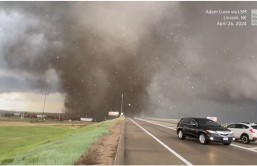The Food and Drug Administration claims the Idaho State Department of Agriculture detected and ignored, signs that yogurt from the Chobani yogurt facility in Twin Falls, Idaho, was contaminated, the Associated Press reported.
Chobani issued a recall of 35 different varieties of yogurt two months after reports of over 300 people were stricken ill after eating yougurt produced at the facility, according to the AP.
The Twin Falls factory which was opened in December of 2012 was named "Plant of the Year" by Food Engineering because of it's state of the art facilities, according to the Chobani website. The factory is the largest yogurt manufacturing facility in the world.
The FDA report claims a state lab technician spotted the defects and yeast-like growth in the yogurt samples, which were taken from the factory line in July. The discovery led to a full equipment cleaning and follow-up tests which did identify mold-growth in the yogurt, according to the AP.
Pamela Juker, an Idaho Agriculture Department spokeswoman, said the state regulators "never detected the yeast-like substance during the routine inspection in July and don't know where the FDA got its information," the AP reported.
According to Juker, the Department of Agriculture is authorized to test yogurt products for coliform bacteria, which none of the samples of the yogurt showed signs of, the AP reported. She also said the FDA report did not rely on the agency's lab reports, adding that since the facilities opening, it has met all standards for coliform.
"All of the raw and finished product-testing results met the requirements of the Pasteurized Milk Ordinance," Juker said. "All of the tests we've done met the requirements."
Chobani representatives said in a statement the company just wants to ensure the Twin Falls facility is "a leader in size, cleanliness, quality and safety," the AP reported.
"To accomplish this, we have brought in significant resources and are working with internal as well as outside experts to put together one of the most advanced food safety and quality systems in our industry," Chobani said in a statement released by public relations firm Weber Shandwick, the AP reported.
According to the FDA report, the state department did a quarterly sampling in July and after signs of yeast-like growth were encountered, the department did a follow-up with Chobani, leading to the discovery of yogurt swelling in their own samples, according to the AP.
The problem was believed, at the time, to have been a yeast infection, so equipment cleaning began, but the problem did not stop, the AP reported. This led to more testing, which later found the mold growth within the yogurt itself.
After the problem was correctly identified, the entire facility was subject to a thorough cleaning and all equipment was dismantled and re-cleaned, the AP reported. The link between the mold and illness was never confirmed but Chobani, along with the FDA, issued a voluntary recall of the yogurts contaminated.








